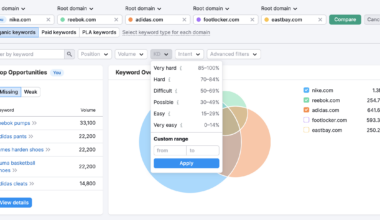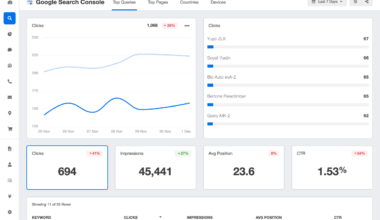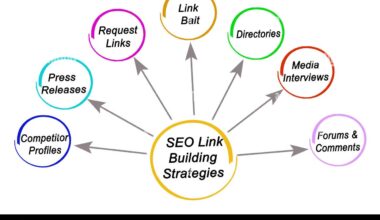Introduction to Featured Snippets
As a content creator, you want your website to appear at the top of search results. However, with so many websites competing for the top spot, it can be challenging to get noticed. This is where featured snippets come in.
Featured snippets are short, concise answers to search queries that appear at the top of Google’s search results. They are designed to provide users with quick and easy answers to their questions without having to click through to a website.
Featured snippets typically appear in a box format and can include text, images, or videos. They are a great way to increase your website’s visibility and drive traffic to your site.
There are several types of featured snippets, including:
- Paragraphs
- Lists
- Tables
- Videos
- Images
To optimize for featured snippets, you must first identify the opportunities. This means understanding what your target audience is searching for and creating content that answers their questions concisely.
Creating content for featured snippets involves understanding the search intent behind the query. For example, if someone searches for “how to bake a cake,” they are likely looking for a step-by-step guide, which you can provide in list format.
Once you have created content that answers the search query, it’s time to optimize it for featured snippets. This involves formatting your content in a way that is easy for Google to understand and display in a featured snippet.
Some tips for optimizing your content for featured snippets include:
- Use concise and clear language
- Format your content in lists or tables
- Include relevant images or videos
- Use headers and subheaders to break up your content
- Provide a clear and concise answer to the search query
In conclusion, featured snippets are a valuable tool for increasing your website’s visibility and driving traffic to your site. By understanding the types of featured snippets and how to optimize your content for them, you can improve your chances of appearing at the top of Google’s search results.
Types of Featured Snippets
Featured snippets come in several types, each with its own unique format and appearance. Understanding these different types of featured snippets can help you create content that is optimized for each type and increase your chances of appearing at the top of search results.
1. Paragraphs
Paragraph featured snippets are the most common type and appear in a box format with a short paragraph of text. These snippets usually provide a quick and concise answer to a search query, making them ideal for informational queries.
2. Lists
List featured snippets appear in a step-by-step format and are perfect for search queries that require a sequence of steps or instructions. They are often used for “how-to” queries and can include bullet points or numbered lists.
3. Tables
Table featured snippets appear in a table format and are ideal for search queries that require comparison or data. They are often used for product comparisons, pricing, or statistics.
4. Videos
Video featured snippets appear in a video format and are ideal for search queries that require a visual demonstration or explanation. These snippets often come from YouTube and other video-sharing platforms.
5. Images
Image featured snippets appear in an image format and are ideal for search queries that require a visual representation or illustration. These snippets can include charts, graphs, and other visual aids.
Identifying the type of featured snippet that appears for a particular search query can help you create content that is optimized for that format. By understanding the different types of featured snippets and how they appear, you can create content that is more likely to appear at the top of search results and drive traffic to your website.
Identifying Featured Snippet Opportunities
To optimize for featured snippets, you need to identify the opportunities that exist for your content. This means understanding what your target audience is searching for and what types of featured snippets are most relevant to your content.
Here are some tips for identifying featured snippet opportunities:
1. Conduct Keyword Research
Keyword research is essential for identifying the search queries that your target audience is using to find information related to your content. Tools like Google Keyword Planner and SEMrush can help you identify the most popular search queries related to your topic.
2. Analyze Search Results
Analyzing the search results for your target keywords can help you understand what types of content are appearing in featured snippets. Take note of the format, structure, and content of the featured snippets that appear for your target keywords.
3. Use Answer the Public
Answer the Public is a free tool that generates a list of questions that people are asking related to your topic. This can help you identify the specific questions that people are asking and create content that provides a concise answer to those questions.
4. Leverage Google Search Console
Google Search Console provides data on the search queries that are driving traffic to your website. Analyzing this data can help you identify the search queries that are most relevant to your content and the types of featured snippets that are appearing for those queries.
5. Monitor Competitor Content
Monitoring the content of your competitors can help you identify the types of featured snippets that are most relevant to your content. Take note of the types of content that are appearing in featured snippets and look for ways to create similar content that provides a better answer to the search query.
Identifying featured snippet opportunities is essential for creating content that is optimized for these snippets. By understanding what your target audience is searching for and the types of content that are appearing in featured snippets, you can create content that is more likely to appear at the top of search results and drive traffic to your website.
Creating Content for Featured Snippets
Creating content for featured snippets involves understanding the search intent behind the query and providing a concise answer that satisfies the user’s needs. Here are some tips for creating content that is optimized for featured snippets:
1. Identify the Search Intent
Before creating content for featured snippets, it is essential to identify the search intent behind the query. This means understanding what the user is looking for and the type of answer they expect to receive. For example, if someone searches for “how to change a tire,” they are likely looking for a step-by-step guide.
2. Provide a Clear and Concise Answer
Featured snippets are designed to provide users with a quick and easy answer to their query. Therefore, it is essential to provide a clear and concise answer that satisfies the user’s needs. The answer should be easy to read and understand, and it should provide all the necessary information in a concise format.
3. Use Headers and Subheaders
Using headers and subheaders is an effective way to break up your content into bite-sized pieces and make it easier for Google to understand. This also makes it easier for users to read, and it helps to improve the overall user experience.
4. Use Lists or Tables
Using lists or tables is an effective way to provide information in a concise and structured format. This makes it easier for users to read and understand, and it makes it easier for Google to display your content in a featured snippet.
5. Include Images or Videos
Including relevant images or videos can help to enhance your content and make it more engaging. This can also increase the likelihood of your content appearing in a featured snippet, especially for queries that require a visual demonstration or explanation.
6. Optimize for Voice Search
With the rise of voice search, it is essential to create content that is optimized for this type of search. This means using natural language and long-tail keywords that match the way people speak.
By creating content that is optimized for featured snippets, you can increase your chances of appearing at the top of Google’s search results and drive more traffic to your website. Remember to focus on providing a clear and concise answer to the user’s query, using headers and subheaders to break up your content, and using lists or tables to provide information in a structured format.
Optimizing Content for Featured Snippets
Optimizing your content for featured snippets involves formatting it in a way that is easy for Google to understand and display in a featured snippet. Here are some tips for optimizing your content for featured snippets:
1. Use Concise and Clear Language
Featured snippets are designed to provide users with a quick and easy answer to their query. Therefore, it is essential to use concise and clear language that is easy to read and understand. Avoid using technical jargon or complex language that might confuse the user.
2. Format Your Content in Lists or Tables
Formatting your content in lists or tables is an effective way to provide information in a structured format. This makes it easier for Google to display your content in a featured snippet, and it makes it more engaging for the user to read.
3. Include Relevant Images or Videos
Including relevant images or videos can make your content more engaging and increase its chances of appearing in a featured snippet. This is especially true for queries that require a visual demonstration or explanation.
4. Use Headers and Subheaders to Break up Your Content
Using headers and subheaders is an effective way to break up your content into bite-sized pieces. This makes it easier for Google to understand your content and display it in a featured snippet, and it makes it more engaging and easier to read for the user.
5. Provide a Clear and Concise Answer to the Search Query
Providing a clear and concise answer to the search query is essential for appearing in a featured snippet. Make sure that your answer is easy to read and understand, and that it provides all the necessary information in a concise format.
6. Optimize for Long-Tail Keywords
Optimizing your content for long-tail keywords can increase your chances of appearing in a featured snippet. Long-tail keywords are more specific and targeted, and they match the way people speak when using voice search.
By optimizing your content for featured snippets, you can increase your website’s visibility and drive more traffic to your site. Remember to use concise and clear language, format your content in lists or tables, include relevant images or videos, use headers and subheaders to break up your content, provide a clear and concise answer to the search query, and optimize for long-tail keywords.
Final Thoughts
Optimizing for featured snippets requires a strategic approach to content creation and formatting. By understanding the different types of featured snippets, identifying opportunities, and optimizing your content, you can increase your website’s visibility and drive more traffic to your site.
Remember to focus on providing a clear and concise answer to the user’s query, using headers and subheaders to break up your content, and using lists or tables to provide information in a structured format. Including relevant images or videos can also enhance your content and increase its chances of appearing in a featured snippet.
It’s important to note that while appearing in a featured snippet can drive more traffic to your site, it’s not the only metric for success. Make sure to prioritize creating high-quality, informative content that meets the needs of your target audience.
Finally, keep in mind that Google is constantly updating its algorithms and features, so it’s important to stay up-to-date on any changes that may impact your website’s search rankings. By monitoring your website’s performance and making adjustments as needed, you can continue to optimize for featured snippets and other search features.






















